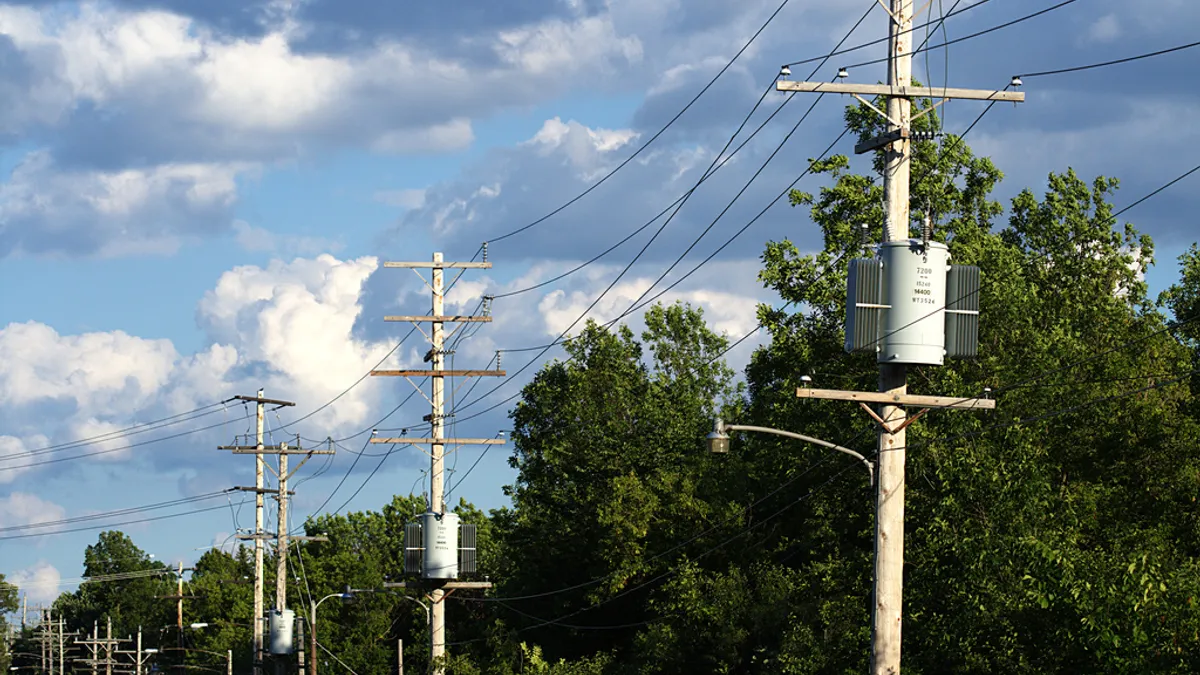Dive Brief:
- The U.S. Department of Energy on Dec. 28 proposed new energy-efficiency standards for distribution transformers to come into effect in 2027, aiming to reduce greenhouse gas emissions and potentially saving consumers approximately $15 billion over 30 years.
- Because most electricity generated at power plants goes through one or more transformers, experts say even small efficiency improvements can significantly reduce emissions and electricity generation.
- DOE said the proposed rules would impact three categories of distribution transformers, requiring them to include amorphous steel cores that are more efficient than those typically made of grain-oriented electrical steel.
Dive Insight:
Efficiency standards for distribution transformers were last updated in 2013, but conservation advocates say that change required only small improvements.
“Most distribution transformers today use outdated technology that wastes electricity before it even gets to our homes and businesses,” Andrew deLaski, executive director of the Appliance Standards Awareness Project, said in a statement. DOE’s proposal would ensure all new models “minimize waste and use materials with a robust long term supply.”
Distribution transformers -- often seen on neighborhood utility poles -- lower the voltage of electrical power before delivery to the customer. The new proposal would update standards for liquid-immersed, low-voltage dry-type and medium-voltage dry-type distribution transformers, said DOE.
The agency estimates the proposed standards could reduce U.S. carbon dioxide emissions by 340 million metric tons over the next 30 years, generate energy savings in excess of 10 quads and pass on significant savings to customers.
“Just this small efficiency improvement would avert significant greenhouse gas emissions because these things are everywhere,” deLaski said.
DOE plans to host a Feb. 16 public meeting on the proposed distribution transformer rulemaking.
DOE also noted that as the supply of traditional, grain-oriented steel tightens, the agency is focused on diversifying domestic steel production where capacity can be expanded, such as in the production of amorphous steel.
Utilities have recently warned that a shortage of distribution system transformers is depleting replacement equipment stockpiles and slowing electrification efforts.
DOE said it is finalizing implementation guidance for the distribution transformer and extended product system rebate programs established by the Energy Act of 2020 and funded by President Joe Biden’s Bipartisan Infrastructure Law.
The rebate program “encourages the replacement of energy-inefficient distribution transformers and extended product systems with more-efficient replacements,” the agency said in its announcement.
“By modernizing their energy-conservation standards, we’re ensuring that this critical component of our electricity system operates as efficiently and inexpensively as possible,” Secretary of Energy Jennifer Granholm said in a statement.














